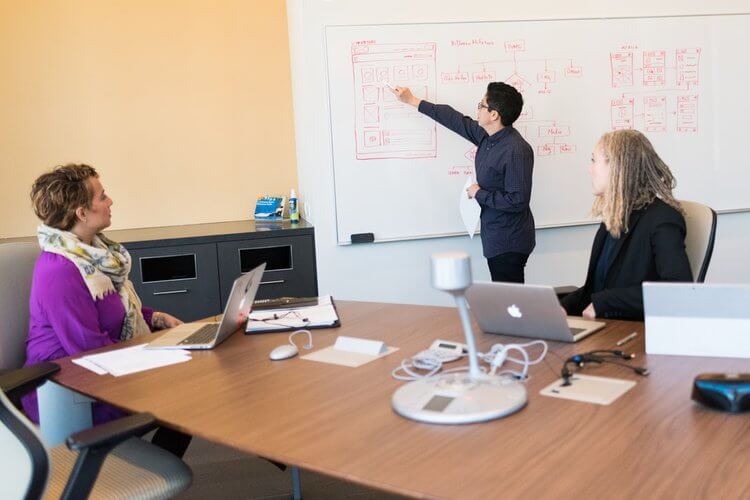Human Resources

5 Ways to Improve Diversity and Inclusion in the Workplace

06 August 2020 - 5 min read
While most leaders and HR professionals are increasingly eager to embrace diversity and inclusion in their organisations, what many employers don’t realise is that diversity isn’t necessarily synonymous with inclusivity.
A diverse workforce means incorporating employees of different ages, races, genders, religions, personalities, and so on, whereas being inclusive means creating and maintaining a company culture where employees of all different backgrounds feel valued, respected, and empowered.
When executed correctly, diversity and inclusion can have incredibly positive impacts on people and business development, so we’ve highlighted 5 ways your organisation can improve diversity and inclusion in the workplace to help you with the leg work.

Create an Inclusive Workplace
When people come to work, they want to feel like they belong, like they’re included. However, when employees feel weary about showing certain parts of themselves at work because they don’t feel safe and confident to do so, it can wreak havoc on employee engagement, motivation, retention, and turnover rates.
HR should take special care to make sure that their organisation’s workplace feels inviting for each employee. If a Muslim employee needs to attend his daily prayer routine, for example, they should be made to feel comfortable doing so on company grounds. Or, say, if an employee’s first language isn’t English, they shouldn’t be made to feel insecure by any language barriers and should receive the patience they deserve when interacting with their managers and colleagues.
To support diversity and create an inclusive workplace, the practice of basic courtesy is essential. HR leaders should take special care in making sure their organisation is embracing zero-tolerance discriminatory practices and policies. This way, employees feel included as well as safe to voice any questions, concerns, and opinions without fear of discrimination which, in turn, allows companies to actively listen to and appreciate diverse viewpoints.
Acknowledge Each Religion and Culture
By honouring the various religions and cultures that make up a diverse workforce, you’re telling employees that their traditions and customs are just as valuable as anyone else’s.
One obvious way to make sure this practice is implemented is by focusing on holidays and celebrations in the workplace. Most of us are used to celebrating Christmas at the office and having the day off, for instance, but many people don’t participate in the tradition at home.
Why not ask individuals who celebrate Eid or other religious holidays to share their traditions and find a way to effectively acknowledge them at work? Everyone will learn something, and you’ll create an engaging employee experience.
If your organisation already does this, another way to acknowledge and respect religions and cultures in the workplace is to have designated areas in the office kitchen for kosher-specific or vegetarian foods, for example, or provide training to employees to educate themselves further on culture and diversity.
When employees feel supported and empowered to be themselves at work, their levels of job satisfaction rise, and companies benefit from improved employee retention.

Be Open to Wider Conversation
Diverse and inclusive company culture is one that should be all about transparency. That includes employees being able to talk openly and honestly with their managers about anything from a general workday grievance to any potential wider issues – like gender pay inequality, for instance.
For conversations to be truly effective, leaders need to have an open and empathetic approach when talking to their employees. When employees feel comfortable speaking their minds, they’ll feel that their exchanges with their superiors are authentic and effective.
Comparatively, by fostering a feedback culture, managers will feel that they can have positive and productive – and sometimes tough – conversations with employees, resulting in more trusting and productive working relationships.
Embrace Diverse Thinking
When your company focuses on diversity when recruiting and onboarding new hires, it puts your business in a position to think about things in culturally diverse ways.
When people from various backgrounds come together, they’re not only bringing their own thoughts and opinions to the table, they’re bringing insight from previous generations – many of which have very contrasting outlooks on contemporary workplace topics and issues.
Through gaining a better understanding of how different employees think, leaders can more effectively comprehend the thought processes behind their employees’ motivations and, to that end, become better leaders.
By taking in diverse and useful feedback and creating an environment where everyone feels valued and part of something bigger, businesses are embracing thought diversity and accounting for inclusivity – the key to making the best and most mutually beneficial workplace impacts.

Evaluate and Foster Diversity at Every Level
If you’re an HR professional who’s looking to improve diversity and inclusion in the workplace, the first place to look is not from the bottom up, but from the top down.
That’s right – look to the high level, C-suite executives in your organisation. How diverse is that team? Are men and women represented equally? What about people of colour – are there any?
The makeup of your executive team is a major indication of the level of diversity within your company (not to mention the rate of diversity amongst your customers, associates, and investors). Therefore, it’s ideal that diversity and inclusion is embodied at the executive level – because different types of people need to be properly represented or your business risks contention among its employees. Seeing is believing, after all, and people want to see themselves represented through their superiors.
While most leaders or HR professionals won’t have much pull over their executive team, it’s still worth it to implement the right practices to eliminate bias – unconscious or not – and make the fairest hiring decisions in the lower levels of the company (at the very least). Some best practices include:
- Effective training for hiring managers
- Gender-neutral job descriptions
- Anonymised resumes and cover letters (also known as ‘blind-hiring’)
- Running ‘hiring for potential’ programs
It would be fair to say that diversity and inclusion have become more than just checklist items for leaders and HR professionals. According to Market Inspector, increasing workplace diversity can boost the UK economy by £24 billion a year, making it even more obvious that businesses (especially during the current pandemic) need to make smarter, more informed decisions related to hiring and maintaining their employees.
Diversity and inclusion in the workplace – and in life – benefits everyone, and it’s time to take it seriously.
Learn more by gaining a globally recognised CIPD HR qualification 100% online with us and enhance your career today.
Download Your Free CIPD Course Guide
Get information on our CIPD courses
Share this post












